Ute
Should I Buy a Ute or SUV?
Choosing between a ute and an SUV depends on your specific needs, lifestyle, and preferences. Both types of vehicles have their advantages and disadvantages, so it’s essential to consider your priorities and how you plan to use the vehicle.
Here are some key factors to consider when deciding between a ute and an SUV.
Cargo and Towing Capacity:
Ute: generally designed for heavy-duty use, utes are a better choice if you need to transport large or heavy items regularly. They also tend to have higher towing capacities, making them suitable for hauling trailers, boats, or other equipment.
SUV: They typically have a closed cargo area, which is more secure and weather-resistant than a ute’s open bed. While some SUVs offer good cargo space, their towing capacities may be lower than utes, so consider your towing needs.
Passenger Capacity:
Ute: Usually have two rows of seats and can accommodate up to five passengers, but the rear seats may be less spacious and comfortable compared to SUVs.
SUV: Available in various sizes, from compact to full-size, and can often seat more passengers, including up to eight occupants. If you need to transport a larger family or group of people regularly, an SUV may be a better choice.
Off-Road Capability:
Ute: Many utes come with four-wheel drive (4WD) or all-wheel drive (AWD) options, making them suitable for off-road adventures or rugged terrain.
SUV: SUVs come with varying levels of off-road capability. Some are designed for mild off-roading, while others, like dedicated off-road SUVs, are built for more extreme conditions.

Fuel Efficiency:
Ute: utes may have larger, more powerful engines designed for heavy work, which can result in lower fuel efficiency compared to some SUVs.
SUV: Many SUVs offer better fuel efficiency, especially the smaller and more compact models. If fuel economy is a priority, an SUV might be a better choice.
City versus Rural Driving:
Ute: utes can be more challenging to maneuver in tight urban spaces due to their longer wheelbase. They are often preferred in rural or suburban settings where space is less of a concern.
SUV: Smaller SUVs are generally easier to drive in city environments because of their compact size and better visibility, but obviously this will be different for larger SUV models.
Safety:
Both utes and SUVs come equipped with a range of safety features, but the availability and level of these features can vary between models and brands. Be sure to research and compare safety options when making your decision.
Price:
Consider your budget, as utes and SUVs come in a wide price range. Utes tend to have a lower starting price for basic models, but high-end models can be expensive. SUVs also vary in price, with luxury SUVs typically being more costly.
Ultimately, choosing between a ute and an SUV should be based on your specific needs and preferences. It’s advisable to test drive both types of vehicles and consider factors like cargo space, passenger capacity, towing needs, and how you plan to use the vehicle before making a final decision.
Additionally, research the available models and their features to find the one that best suits your lifestyle and requirements.
New Utes and Vans
There are now lots of vehicles for sale that are well-suited for serving in many different roles in all sorts of Trades throughout Australia. Whether you’re an electrician, a builder, a plumber, a gardener, a boat builder, a florist, a baker, a butcher, etc., – the list just goes on – there is a load of new vehicles available on the market that will aptly serve your business and recreational needs.
Let me take you through them. I’ll make it easy for you and list them in two categories: Vans and Utes. In both categories the vehicles are listed in ascending order of price. That will make it easier to see which of the vehicles may fit into your price range and budget.
Vans
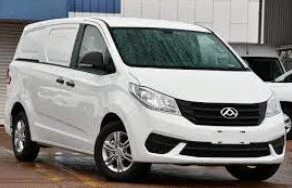
LDV G10 (≈$36–38k)

LDV V80 (≈$36–45k)

Peugeot Partner (≈$40–45k)
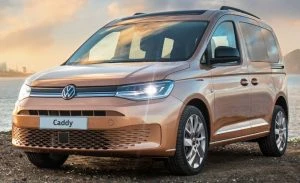
Volkswagen Caddy (≈$40–51k)
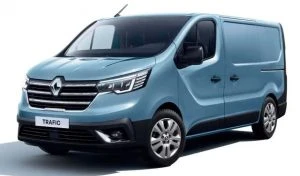
Renault Trafic (≈$44–61k)
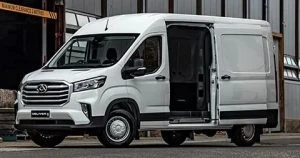
LDV Deliver 9 (≈$45–50k)

Volkswagen Transporter (≈$47–66k)

Hyundai STARIA LOAD (≈$48–54k)

Peugeot Expert (≈$48–58k)

Ford Transit Custom (≈$49–60k)

Mercedes Benz Vito (≈$49–79k)
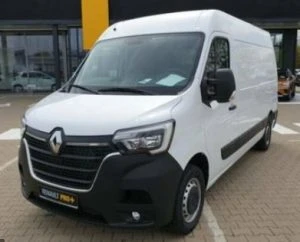
Renault Master (≈$53–64k
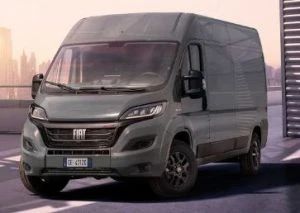
Fiat Ducato (≈$53–66k)

Renault Kangoo Van Maxi Z.E (≈$55k) Electric Van

Ford Transit (≈$58–68k)

Volkswagen Crafter (≈$60–160k)

Mercedes Benz Sprinter (≈$66–91k)
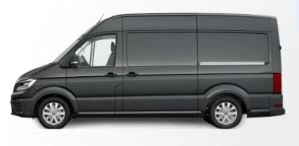
Volkswagen Crafter 50 (≈$73–82k)
Utes

Mahindra PIK-UP Light Truck S6+ (≈$26–30k)

Mitsubishi Triton Cab Chassis (≈$28–47k)
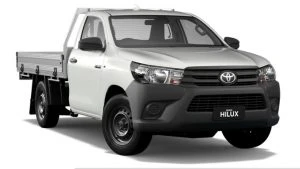
Toyota Hilux Cab Chassis (≈$28–64k)
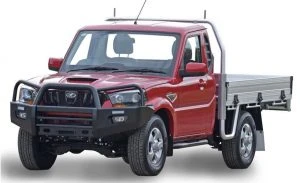
Mahindra PIK-UP Cab Chassis (≈$34k)
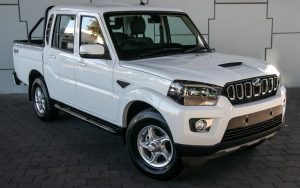
Mahindra PIK-UP Ute (≈$35–42k)

GWM Ute Double Cab (≈$35–45k)

LDV T60 Double Cab(≈$36–43k)
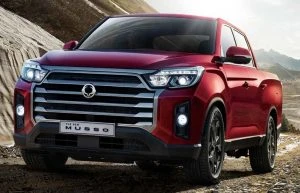
SsangYong Musso Ute ($36-47)

Nissan Navara Cab Chassis SL (≈$36–52k)

Isuzu D-MAX Cab Chassis (≈$37–65k)
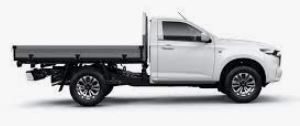
Mazda BT-50 Cab Chassis (≈$38–61k)

Toyota Hilux [Single and Double Cab] (≈$38–76k)

Ford Ranger Cab Chassis (≈$40–67k)

Mitsubishi Triton Ute Double Cab (≈$42–64k)
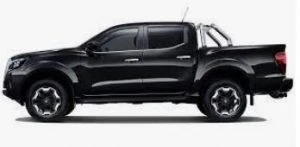
Nissan Navara Ute Double Cab (≈$44–76k)
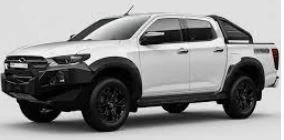
Mazda BT-50 Double Cab (≈$47–76k)

Ford Ranger Ute (≈$47–91k)

LDV Deliver 9 Cab Chassis (≈$48k)

Isuzu D-MAX Double Cab (≈$49–73k)

Volkswagen Amarok (≈$51–88k)

Ford Transit Cab Chassis (≈$60–64k)
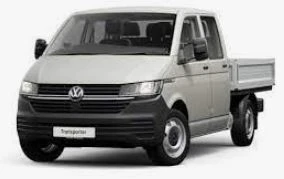
Volkswagen Transporter Light Truck (≈$60–69k)
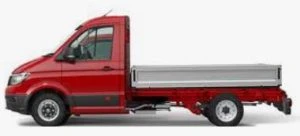
Volkswagen Crafter 50 Cab Chassis (≈$69–75k)
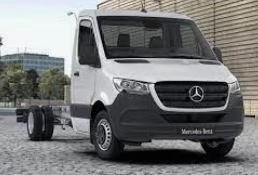
Mercedes Benz Sprinter Cab Chassis (≈$74–83k)

Toyota Landcruiser Cab Chassis (≈$74-88k)
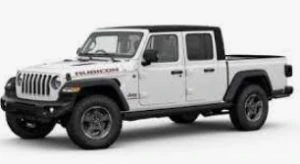
Jeep Gladiator Ute (≈$79–88k)

RAM 1500 Ute (≈$89–209k)

Chevrolet Silverado (≈$107–145k)
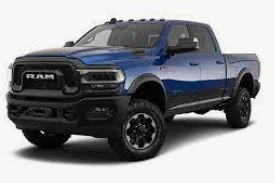
RAM 2500 Ute (≈$172–177k)
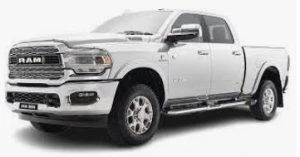
RAM 3500 Ute Laramie Double Cab (≈$177k)
Let’s Go and Caravan

We’ve got the country, we’ve got the beauty, and it seems peoples’ love for caravanning and camping around Oz is growing steadily. The latest figures from Tourism Research Australia show that the popularity of domestic caravanning and camping trips is one pastime that many Australians cherish. It’s not hard to see why people enjoy it, when there is so much natural beauty in Australia’s landscapes and wildlife.
According to the latest domestic tourism record, it shows that Australians spent a total of 54.5 million nights caravanning and camping during the year ending March 2019. This number is an increase of 6.5% from the previous year. While on these trips, many caravanners and campers also opted to eat out at local cafes or restaurants, a bonus for the local businesses. This growth was experienced across the board, in all States and Territories, with over 10% growth recorded for Northern Territory, South Australia, Victoria, Tasmania and Queensland. Interestingly, in terms of age demographics, those with a family in tow – i.e. parents with one or more children living at home – belonged to the demographic group that accounted for the largest number of caravan/camp trips in a year. People who were part of the younger, mid-life demographic, and with no children, were those of the second largest group taking plenty of caravanning or camping trips (4.2 million). When it comes to the most nights away in a year, the older non-working demographic (often called ‘grey nomads’) were leading the way with 32% of the total number of nights spent in Australia caravanning or camping. In comparison, the family segment was only slightly less at 30%.
Sorry tenters, but I’m getting older and so will give my few cents worth for caravanning in the following! I enjoy getting away in our caravan when we can. Having a caravan in tow allows for a little more comfort on the trip, with less hassle on arrival at each new destination. Everything you really need is with you, and the beds are ready made for the night, with no need to pitch tent!
I would certainly recommend trying caravanning, particularly if you like the idea of enjoying the great outdoors, getting away from most of the electronic vices, and smelling the clean air. You get to meet a whole bunch of friendly, like-minded people along the way. You also get to discover the many new places you’ve never seen before or rediscover your old favourite spots that you love to get back to. These sorts of experiences are a treat that I never grow tired of.
Caravan Types
Here are some of the varieties of caravans you can buy without looking into purchasing a fully-fledged motorhome:

Standard Caravan
Easy to tow. It really just depends on the tow rating of your car as to how large or heavy the standard caravan is. The smaller the caravan, generally, the lighter and easier it is to tow than bigger ones. Standard caravans come in a range of sizes, single and tandem axles, and so some of the standard caravans can even be pulled by smaller cars.
Because standard caravans aren’t as heavy as the more ruggedly designed off-road caravans, they demand less torque and horsepower to tow comfortably out on the open road; thus, they are more economical on the fuel/power bill.
Standard caravans are also a bit easier to store and manipulate by hand, particularly the smaller ones.

Pop Tops
Pop-tops are easy to tow. Small caravans like pop-ups are, generally, much lighter and easier to tow from A to B than larger types of caravans. You get much better fuel economy towing a pop-top because of the lower drag co-efficiency.
Pop-tops a doddle to store and manipulate by hand, particularly the smaller ones.

Expander
The merits of an expander caravan are similar to any standard or off-road caravan; however, they have the added bonus of a variety of pop-out areas that can be designed into the ceiling and walls. Essentially, pop these areas out at your destination, and you have a lot more interior space and utility at your disposal while being stationary. Just before you tow away, these areas are fold back into place, and away you tow again.

Off Road Caravan or Camper
The merits of having an off-road capable caravan or camper speak for themselves. They have been built tough and rugged so that you can tow them off-road. Obviously, you are going to need a bigger, torquier vehicle to tow this type of caravan/camper as they are heavier built and weigh more. Usually, these are towed by a decent 4×4 capable vehicle like a Land Rover, Toyota Land Cruiser, Ford Ranger, etc.

Camper Trailer
Similar to a pop-up caravan, except they fold out an array of attached tents. These are light and easy to tow. They can be designed for towing both on and off the road. They are cheaper to buy, as are pop tops.
Is there Still Space in the Market for Sedans?
Like a slow motion replay, the scene has been unfolding for some time. In fact, go back a couple of years and the writing was on the wall. Australians are obsessed with SUVs. But it’s not just here either, with many other countries following the trend, none more evident than the United States and China.
It has reached the point now where local SUV sales are far and away outperforming sedans, and have blown past 50% of all new car sales. On the one hand, the rise of commercial vehicles like utes has also helped to skew the numbers away from sedans, but the prominence of the SUV category is no statistical anomaly.
With such an evident trend appearing to be set in stone, it does raise questions over the future viability of the sedan format. In particular, will sedans still have a place in the market as SUV sales soar?

An evolving landscape
Cars have always been redefined by the technological progress that accompanies them. That doesn’t just extend to what’s under the bonnet either, nor what’s inside the cabin. It also extends to the shape of the body. We’ve seen an evolution as far as new formats like crossovers, liftbacks and many other identities.
In many respects, there is no reason to believe this won’t continue as means to continue fuelling the sedan market. Design changes may be subtle, but incorporating the feedback we’ve come to expect from those who prefer things like superior room, ride height, visibility and off-road versatility that comes with an SUV. Not to mention, with electrification and autonomy on the way, designs will inherently continue to transform, gradually shifting our taste in vehicles too.

The value proposition will dictate future sales
For now, sedans are still posting sales numbers that are nothing to sneeze at. Sure, they may be declining, but the choice for SUV models has risen astronomically to provide more options than ever before. Motorists’ preferences may have changed but in some ways, historical data may have been otherwise pointed to higher levels of SUV sales – and lower sedan sales – had drivers been afforded more choice at an earlier stage.
It is also a challenge that manufacturers should embrace. They will not only be faced with the task of streamlining their sedan range – as many have done already – but also going about reinvigorating a value proposition into the category to drive sales.
SUV sales may offer auto-makers fatter margins, however their higher prices and at-times polarising looks will still be a barrier to pushing sedans out of the market. So if sedans are then here to stay, car manufacturers must add value in the form of new technology, amenity, efficiency and performance to compete for the shrinking pool of buyers. And it’s many of these criteria that sedans have historically held the upper hand.